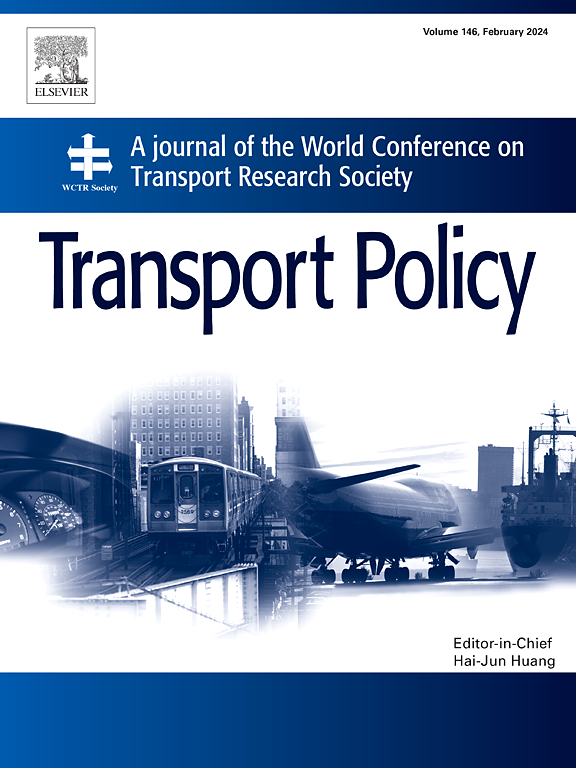面向跨境电子商务的快速航运:中国9610进口模式下快运班轮优化的中日案例研究
IF 6.3
2区 工程技术
Q1 ECONOMICS
引用次数: 0
摘要
在跨境电商成为外贸增长最快的方式和快速跨境海运需求不断增加的背景下,基于双边跨境电商商品的机会成本,考虑到门到门运输过程中库存成本和运输成本的互补性,我们提出跨境电商快运班轮服务。针对中国9610进口模式,以中国跨境电商进口货物的总广义运输成本最小为目标,建立优化模型,对快运班轮运输进行船型、航速和出港频次的决策。以中日跨境电子商务为例进行数值分析,将中国进口货物按其价值划分为四类,分别计算三种运输方式的模式划分,确定快运班轮运输的服务指标。本研究不仅为构建中日跨境电子商务运输体系奠定了基础,也为其他双边跨境电子商务运输方式的创新提供了参考。本文章由计算机程序翻译,如有差异,请以英文原文为准。
Rapid shipping for cross-border E-Commerce: A Sino-Japanese case study on express liner optimization under China's 9610 import mode
In the context of cross-border e-commerce becoming the fastest growing mode of foreign trade and demand increasing for rapid cross-border maritime transportation, based on the opportunity cost of bilateral cross-border e-commerce commodities, and taking into account the complementary nature of the inventory cost and transportation cost in the process of door-to-door transportation, we propose the cross-border e-commerce express liner service. For China's 9610 import mode, with the objective of minimizing the total generalized transportation cost of China's cross-border e-commerce import cargoes, an optimization model is built to implement the decision-making of the ship size, voyage speed and departure frequency for the express liner shipping. Numerical analysis is implemented as an example of Sino-Japanese cross-border e-commerce, where Chinese imported cargoes are divided into four categories according to their values, the modal splits of the three transportation modes are calculated separately, and the service metrics of the express liner shipping is determined. This study not only lays the foundation for building a transportation system for Sino-Japanese cross-border e-commerce, but also provide a reference for the innovation of transportation modes for other bilateral cross-border e-commerce.
求助全文
通过发布文献求助,成功后即可免费获取论文全文。
去求助
来源期刊

Transport Policy
Multiple-
CiteScore
12.10
自引率
10.30%
发文量
282
期刊介绍:
Transport Policy is an international journal aimed at bridging the gap between theory and practice in transport. Its subject areas reflect the concerns of policymakers in government, industry, voluntary organisations and the public at large, providing independent, original and rigorous analysis to understand how policy decisions have been taken, monitor their effects, and suggest how they may be improved. The journal treats the transport sector comprehensively, and in the context of other sectors including energy, housing, industry and planning. All modes are covered: land, sea and air; road and rail; public and private; motorised and non-motorised; passenger and freight.
 求助内容:
求助内容: 应助结果提醒方式:
应助结果提醒方式:


